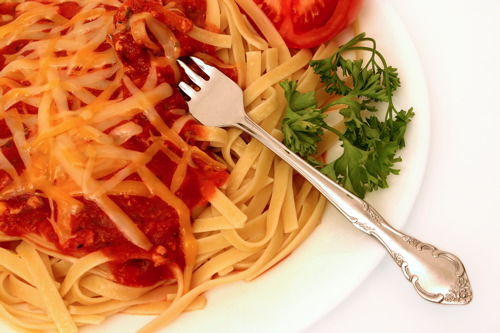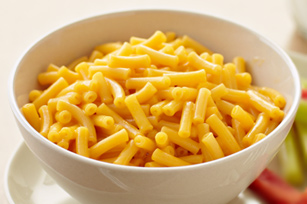As far as written history can tell, the Chinese developed the beloved, carbohydrate-rich cuisine of pasta before any other civilization. Historians and food enthusiasts alike debate whether my ancestral Italy developed pasta independently, or as a reaction to Marco Polo's return from Asia. Regardless, the globalization of pasta is undeniable. Let's start from the beginning.
If you handed a box of this to the average American, he or she would think of Asia, right?

The typical American will see this, and think of Italy, no?

Pasta has strong roots in both of those cultures. There's no denying it. They're not the only nations to make pasta their own, however. What country of origin do you think of when you see this?

As I write, I expect the reader to think of the United States. If you didn't, good for you. Good ol' mac&cheese technically goes all the way back to medevil Italian cookbooks. The image above, however, is Kraft macaroni and cheese. Kraft - an American company founded in 1903, which began marketing macaroni and cheese in 1937 - made over 645 million dollars from sales of their classic blue box in 2010. Culturally, it's considered a college student staple in Canada (like Ramen in the US).
Mac&cheese may be the brainchild of Italian cooks, but foreign companies have globalized the dish, leading to North Americans and Europeans eating hundreds of millions of dollars worth each year.
Here's a final instance of Pasta Gone Global. Any idea what this is?

It's Noodle Kugel, a classic Jewish dish originating in Germany. This method of preparation is unique, and sweeter than most Chinese and Italian recipes. Macaroni and cheese is a prime example of global food adoption. Noodle Kugel is towards other side of the food globalization spectrum: adaptation. Instead of adopting pasta dishes from Italy or China, the Jewish community in Germany adapted pasta. They kept the core ingredient, but cooked it with their own individual culture.
On the whole, pasta has transformed into a global food staple. According to the International Pasta Organization, 27 of the world's nations have citizens who, on average, eat at least 5 pounds of pasta a year. The United States' average is 8.8 lbs. That's higher than butter and peanuts, and almost twice the intake of chocolate.
All of this is very interesting. A quirky flour-water combination, after thousands of years of isolation in China, spread/developed in a rather petite European country during the 13th century. At that time, it was know to those two regions only. In a few hundred years, however, the recipe became a world favorite. Well done, pasta.
What does this mean for our world? For you? For me? As far as I'm concerned, it means that food is a Great Connector. Tonight, I talked about pasta. A different night, I could talk about chocolate, or sausage, or pancakes. Economically, as we saw in the Kraft example, food can jump into a whole new country and start up a multi-million dollar industry. Culturally, a food, like pasta, can spread into different areas and take on whole new forms, like the Kugel I'll be making in the upcoming weeks. Food connects different culture and economies. It makes our Earth an ever more tightly knit - and delicious - place.
Thank you kindly for reading! I hope you check in again next week and see what we can share with you. :)
General pasta facts: http://en.wikipedia.org/wiki/Pasta#History and http://www.britannica.com/EBchecked/topic/445929/pasta
General macaroni and cheese facts: http://en.wikipedia.org/wiki/Macaroni_and_cheese
Kraft data: http://www.journaltimes.com/lifestyles/food-and-cooking/article_8302939e-bdfe-11df-860d-001cc4c03286.html
IPO Statistics: http://www.internationalpasta.org/index.php?cat=22&item=7&lang=2
US Average Intakes Per Capita: http://www.ers.usda.gov/Publications/AgOutlook/AOTables/CurrentTables/AoTables.pdf
Noodle Kugel (picture, plus a recipe!): http://www.foodnetwork.com/recipes/food-network-kitchens/noodle-kugel-recipe/index.html
Italian Pasta: http://www.bestourism.com/items/di/1068?title=Italy&b=209
Chinese Egg Noodles With Smokes Duck (picture and recipe!): http://www.epicurious.com/recipes/food/photo/Chinese-Egg-Noodles-with-Smoked-Duck-and-Snow-Peas-354302
Mac and Cheese: http://mikeythegnarly.wordpress.com/category/munchies/
No comments:
Post a Comment